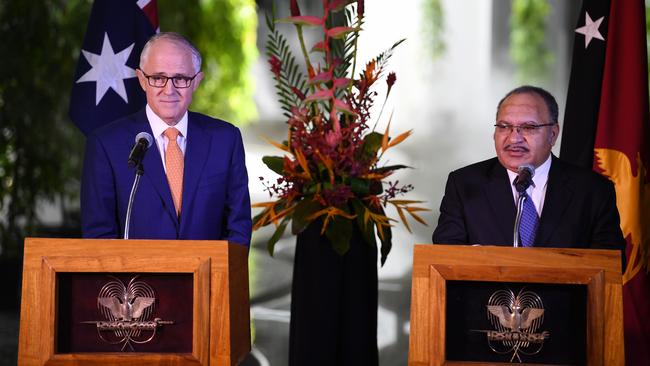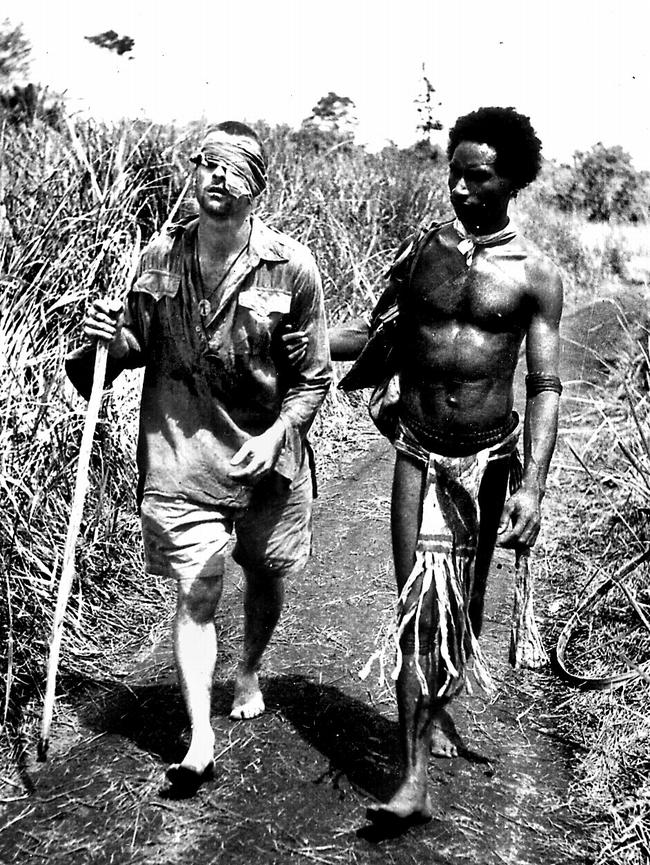Australia’s Northern Shield by Bruce Hunt: why PNG is upset
Australia may be well advanced in creating a strategic problem for itself in relation to Papua New Guinea.

When Malcolm Turnbull made his first official visit to Papua New Guinea in early April, a series of gaffes lit up local social media, reinforcing perceptions of Australian disrespect for its nearest neighbour.
Social media is important in PNG (there are 700,000 Facebook users alone). It’s influential in the development of an increasingly activist middle class, a group the edgy government of Prime Minister Peter O’Neill repeatedly threatens to curb.

And the gaffes? Initially there was a fiery accusation by former PM Mekere Morauta that Turnbull’s visit was timed to interfere with PNG’s impending national election. Then local journalists were excluded from two press conferences (the Australian high commission later apologised for an ‘‘oversight’’), a business breakfast faced allegations of race discrimination, and Turnbull clumsily evaded questions about Australia’s marooned Manus asylum-seekers.
An irritated Opposition Leader Don Polye reminded Turnbull that PNG was no longer an Australian colony. It wasn’t quite the ‘‘hail fellow well met’’ chumminess that the Australian PM might have expected from our largest aid recipient and erstwhile shield against threats from the north.
Indeed the visit demonstrated something observers had suspected for some time: that, exacerbated by the Manus refugee imbroglio, much has changed in the relationship between Australia and PNG.
This is an association that goes back 140 years and, as Bruce Hunt emphasises in his absorbing and elegantly crafted book Australia’s Northern Shield?, the relationship has been grounded in the notion that there could be no secure Australia if the island of New Guinea was not itself secure.
In 1884, when Germany annexed northeast New Guinea, nervous Australia colonies persuaded Britain to acquire the unclaimed southeast of the island, for which Australia became responsible. Then, in September 1914, Australia’s first military action of World War I saw it taking control of northeast New Guinea when an expeditionary force seized Rabaul from the German garrison.
This large chunk of territory — from Manus to Bougainville — was later formally secured by Australia under the 1919 Treaty of Versailles, bringing the entire eastern half of the island of New Guinea under our formal control.
Then prime minister Billy Hughes took the opportunity to remind the Australian parliament of “how utterly the safety of Australia depended upon the possession of these islands”.
But it required a sequence of seismic events that began 20 years later to stir significant action: first the Japanese invasion of 1942, then the growing global anti-colonial movement of the 1950s, Indonesia’s Konfrontasi and the Dutch abdication of West Papua in the early 1960s, and proto-nationalist civil strife in New Britain and Bougainville in the late 60s. On September 16, 1975, Australia relinquished sovereignty, creating the new nation of Papua New Guinea. All went reasonably well until the Bougainville Civil War of the 90s, in which Australia played a major and unhelpful role.
The past 20 years have been dogged by issues of ‘‘governance’’: that is, concern about how PNG spends Australia’s aid contribution, which this year is $558 million plus another $500m for the Manus refugee detention centre.
Hunt relates an enthralling political history and it is a shame the book effectively ends in 1977, soon after PNG’s independence, with just a short final chapter to bring it to the present. The 40 years since deserve equally meticulous and insightful treatment, and given that Hunt is a masterful researcher, analyst and narrator, perhaps this challenge is within his gift.
He sums up that “PNG is no longer seen as a shield or bulwark to protect Australia from invasion”. Perhaps, but it seems to be emerging instead as a stage for big-power political engagement right on our doorstep. It’s about five years since US-China tensions began to escalate in the western Pacific, strategic rivalry that has seen China boost its soft power in the Pacific islands and its military power in the South China Sea. The US’s reactive ‘‘pivot’’ included the deployment of 2500 marines to the region, some of them in Australia’s north.
In this context, John Kocsis, writing in the Harvard Political Review, referred to PNG as the “understudied proxy nation … whose domestic political instability has made it a surprising focus of American and Chinese geopolitical manoeuvring”.
PNG’s great resource wealth, political instability, developmental backwardness and elite venality are topics that emerge in discussions of the country, often blurring a more balanced understanding of what might constitute a strategically apposite relationship with Australia.
When it was little more than an inert landmass with a people just opening their eyes to the outside world, PNG could be aptly perceived as a shield. Now, however, PNG is home to a well-educated and growing middle class that is increasingly fed up with the serial failures of an inept and kleptocratic political leadership.
While in official pronouncements Australia states that we have “a special relationship” with PNG, the truth is we have fallen well short of being a true strategic partner, and nor are we an honest broker. In fact, there is much in our attitude to PNG that has a colonial appearance.
When Polye reminded Turnbull that PNG was no longer an Australian colony, he added: “We must be treated with respect.” His words would have been unnecessary were Australia conducting the relationship in a competent manner.
Over the past 20 years, Australia’s relationship with PNG has drifted from aspiring to strategic partnership, to a more pragmatic formulation. The “new narrative encompassing a shared vision”, which Julie Bishop spoke of as foreign affairs spokeswoman, never developed. Instead, Australia’s inducements to PNG to accept unwanted refugees were a real-life enactment of a preconception that ‘‘if we pay PNG enough, they’ll do what we want’’.
It seems that Australia, perceiving PNG as a place to which we could delegate the political issue of boat arrivals, and PNG, seeing us a place that would reward it handsomely for the privilege, managed to give effect to an opportunism that has crowded out more important geo-strategic considerations and a more mature and cohesive relationship.
So could the new threat in our immediate neighbourhood be Australia’s failure to convert Hunt’s historical shield into a more sophisticated and embracing concord developed on the strong foundation of an equal, honest and authentic relationship?
Between the escalation of China’s influence and the shallow, money-based association we have nurtured with PNG, Australia may already be well advanced in creating a major strategic problem for itself. PNG is no longer a shield but a bastion of disaffection.
Hunt takes as one of his opening quotes a citation from the 2016 defence white paper: “Australia cannot be secure if our immediate neighbourhood, including PNG, became the source of a threat to Australia.” It would indeed be a paradox if it was our own failure to maintain an effective and understanding relationship with PNG that proved to be the underlying cause of that threat.
Keith Jackson is publisher of the PNG Attitude blog and a regular writer on the Australia-PNG relationship.
Australia’s Northern Shield? Papua New Guinea and the Defence of Australia since 1880
By Bruce Hunt
Monash University Publishing, 374pp, $39.95


